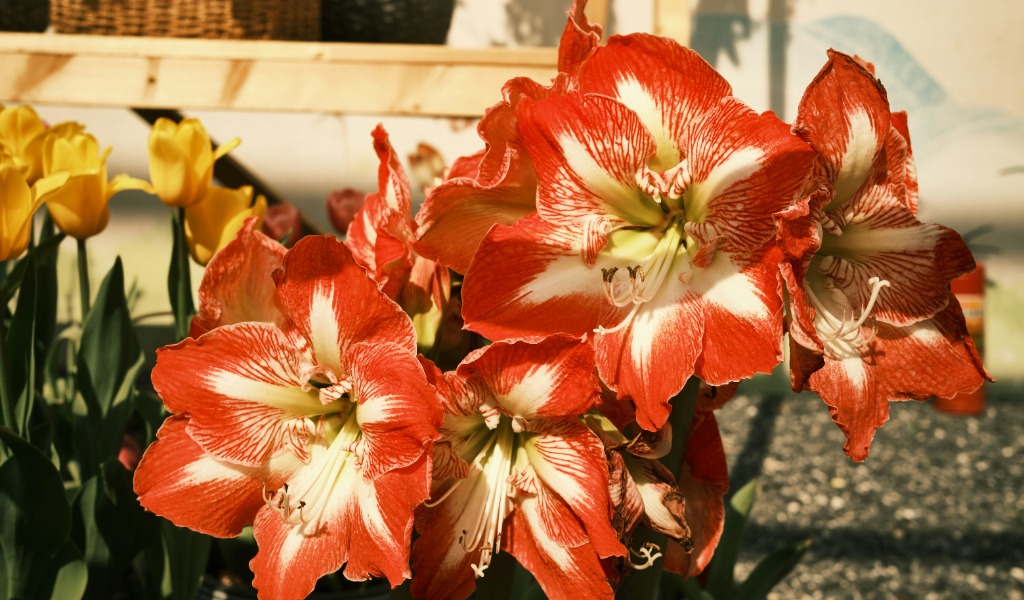From fresh, vibrant flowers to textured grasses and shrubs, a springtime garden opens the door to possibility. As the days get longer and temperatures rise, spring ushers in a new season of growth, making this a busy time of year for anyone with a green thumb — from gardening hobbyists to professional landscape maintenance crews.
It’s important to take time tending to your garden now, setting the stage for healthy growth in the months ahead. As a professional landscape architecture company specializing in design-build and maintenance services, the team at Prewett, Read & Associates understands these needs firsthand. From our home base in Houston, Texas, we work closely with clients to bring life to design through seasonal color, soil health and carefully planned planting schedules. In this blog, we’ll dig into six essential tips for cultivating a thriving springtime garden. We will also spotlight some of the season’s most popular plant varieties along the way.
1. Scope & Scout
First things first, take stock of the current state of your landscape. Depending on the severity of the weather, the winter months may have left some damage in their wake. Identify any dead or damaged flowering plants, shrubs or tree limbs. Cold weather can be tough on hardscapes and irrigation systems as well, causing materials to crack, break and crumble. Taking inventory of your landscape needs will provide you with an action list for your spring garden refresh.
2. Tend the Soil
Healthy plants require healthy soil to grow, and they need a balance of three main nutrients — nitrogen, phosphorus and potassium — to thrive. Test the nutrient levels in your soil to identify the best type of fertilizer to use. To ensure your garden has a nutrient-rich foundation, loosen the soil and enrich it with organic matter, such as compost or aged manure. This is also the ideal time to weed, removing any unwanted growth that will draw nutrients away from your plants, and add mulch for insulating the healthy soil.
3. Prune & Deadhead Plants
Not only does pruning remove unsightly limbs, stalks and branches, but it’s essential for encouraging healthy growth. Pruning plants allows you to shape them and remove dead weight that may be draining your plants, while deadheading — the process of removing dead flower heads — allows for healthy new blooms to grow.
4. Protect Against Pests
Early detection is key when it comes to pest control. Keep a careful eye on your garden for signs of disease or infestation to keep damage at bay. Look for discoloration, changes in leaf texture, speckled foliage or small holes in leaves. If you notice any of the tell-tale signs, act quickly to keep the pests or damage from spreading. Remove any damaged plant matter and work with a professional maintenance team to treat the healthy plants safely.
5. Add Seasonal Color
Breathe fresh life into your landscape by adding seasonal color — carefully selected plants added to highlight sections of your outdoor space. For example, you could line a walkway or brighten up an entryway with eye-catching, color-coordinated flowers. A professional landscaping team will help you select the right plants to complement your landscape, considering the climate, amount of direct sunlight and maintenance needs.
In Houston, we recommend adding bulb varieties like tulips and amaryllis to spring gardens. Other popular choices that do well in the hot, humid climate are magnolias — an iconic addition to any southern garden — and azaleas.
6. Plant When the Time is Right
While each of these steps is important, a healthy growing cycle comes down to timing. Spring weather can be unpredictable, and each plant has a unique set of needs, but with proper research and planning, you can map out a planting schedule best suited for your garden. Planting at the right time of the season maximizes the chances of successful germination, setting the stage for a resilient garden.
As you embark on your springtime garden journey, don’t be afraid to dream big. Just remember, it takes patience, diligence and a touch of creativity to bring life to your landscape — but you don’t have to do it alone. At Prewett, Read & Associates, we take pride in providing full-service maintenance support to cultivate healthy, lush landscapes. Reach out to let us know how we can help bring beauty to your garden this spring — and beyond.


